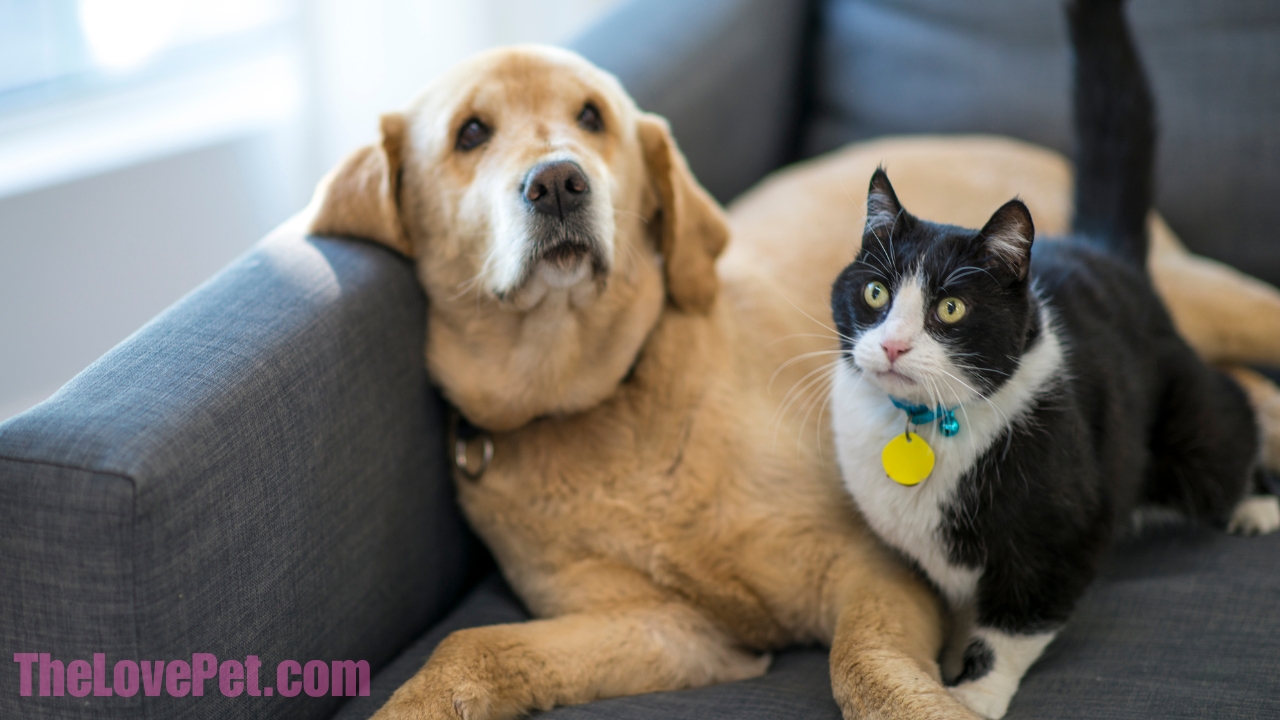Cost Factors
The cost of pet insurance can vary greatly depending on several key factors:
Type of Pet
Insurance premiums are generally higher for dogs than cats, and exotic pets like birds and reptiles often have the highest premiums.
Age of Pet
Younger pets have lower premiums than older pets. Most insurers do not insure pets over a certain age.
Breed
Some breeds that are prone to certain health conditions have higher premiums.
Coverage Type
Plans only covering accidents tend to be cheaper than plans covering illness. Comprehensive plans are the most expensive.
Deductible Amount
Plans with higher annual deductibles have lower monthly premiums.
Reimbursement Percentage
Plans that reimburse 70-80% of costs are cheaper than plans that reimburse 90% or more.
Annual Limits
Plans with lower annual payout limits also have lower monthly premiums.
Average Costs
The average cost for accident-only plans is $20/month. For more comprehensive plans covering both accidents and illnesses, costs range from $30-$80/month. Annual deductibles typically range from $200-$500 per year. Overall, pet insurance costs $30-$70 per month for dogs and $15-$35 per month for cats on average.
Additional Factors Affecting Cost
Geographic Location
The cost of veterinary care can vary significantly depending on where you live. Premiums tend to be higher in areas with higher cost of living and veterinary expenses.
Pre-Existing Conditions
Most plans exclude pre-existing conditions, so pets with any pre-existing health issues will have limited coverage options at higher costs.
Wellness Coverage
Adding routine wellness coverage for things like exams, vaccinations, and dental cleaning increases monthly premiums but can be worth it.
Ways to Reduce Costs
Shop Around
Compare quotes from multiple insurers to find the best deal. Quotes can vary a lot between providers.
Increase Deductible
Choosing a higher annual deductible reduces monthly premiums but increases out-of-pocket costs when you make a claim.
Limit Coverage
Accident-only plans or capping annual payouts can significantly reduce costs but also reduces protection.
#FAQ #Update #AdditionalContent
1. How much does the average pet insurance policy cost for dogs and cats in 2023?
2. What factors impact pet insurance prices?
3. How does pet insurance work?
4. What does pet insurance typically cover?
5. Are pet vaccinations covered by pet insurance?
Pet ownership is a source of joy and companionship for millions of households across the United States. However, it also comes with the responsibility of providing proper care for your furry or feathered friends. One essential aspect of pet care is preparing for unexpected veterinary expenses, and this is where pet insurance can be a lifesaver.
The Average Cost of Pet Insurance
As of 2023, the average cost of pet insurance varies depending on several factors. On average, pet insurance for dogs costs approximately $44 per month, while coverage for cats averages around $30 per month, based on Forbes Advisor’s analysis.
Pet Insurance for Dogs
The cost of insuring your dog can vary significantly. On average, you can expect to pay $44 per month for $5,000 of annual coverage. However, for a policy with unlimited annual coverage, the average monthly cost increases to $56. Keep in mind that the specific cost for your dog will depend on factors such as its age, the amount of coverage you select, and the insurance company you choose. Dog owners typically pay anywhere from $27 to $66 per month.
Pet Insurance for Cats
For cat owners, the average monthly cost of pet insurance is approximately $47 for a policy with unlimited annual coverage. Just like with dogs, the cost can vary based on factors such as your cat’s age, the amount of coverage, and the insurance company you opt for. Cat owners can expect to pay anywhere from $21 to $125 per month.
Factors Affecting Pet Insurance Prices
Several factors influence the cost of pet insurance, including:
1. Coverage Type: The type of coverage you choose plays a significant role in determining your pet insurance cost. Comprehensive policies that cover a range of treatments and routine care tend to be more expensive than accident-only policies.
2. Deductibles: A deductible is the amount of money you pay out of pocket each year before your coverage begins. You can typically choose a deductible ranging from $0 to $1,000. A higher deductible results in lower pet insurance costs.
3. Reimbursement Levels: Pet insurance policies are reimbursement-based, meaning you pay for your pet’s medical expenses upfront and then submit a claim to the insurance company. You can choose reimbursement options of 70%, 80%, or 90% of the covered expenses, with higher reimbursement levels leading to higher insurance costs.
4. Pet’s Breed: Certain breeds are more prone to illnesses, which can lead to more frequent vet visits and higher medical bills. This impacts the cost of insuring your pet, particularly for dogs.
5. Age of Pet: As pets age, the likelihood of illness and injury increases, resulting in higher insurance costs. Insurance rates typically rise at renewal time as your pet gets older.
6. Location: Where you live and the local cost of veterinary care can affect your pet insurance costs. Urban areas often have higher average vet costs, leading to increased insurance premiums.
7. Discounts: Some pet insurance companies offer discounts, such as annual pay discounts, multi-pet discounts, and bundled policy discounts. Military personnel and those with employer-sponsored policies may also qualify for savings.
How Pet Insurance Works
Pet insurance operates on a reimbursement basis. You pay your pet’s veterinary expenses upfront and then submit a claim to the insurance company. Unlike human health insurance, you can choose any licensed veterinarian for your pet’s care.
What Pet Insurance Covers
Most pet insurance plans cover various medical expenses, including:
– Illnesses
– Accidents
– Hospitalizations
– Surgeries
– Prescription medications
However, the exact coverage will depend on the type of plan you purchase, so it’s crucial to review a plan’s benefits, coverage types, and limits before making a decision.
What Pet Insurance Doesn’t Cover
While pet insurance provides vital protection for your pet and your finances, it doesn’t cover everything. Common expenses that pet insurance typically doesn’t cover include:
– Pre-existing conditions
– Routine wellness and preventive care (although some insurers offer optional wellness plans for these)
– Cosmetic procedures
Is Pet Insurance Worth It?
Whether pet insurance is worth it depends on your individual circumstances. If you can’t afford to pay for a large unexpected vet bill out of pocket, pet insurance can provide a financial safety net. You can also consider add-on plans that cover wellness and preventive care expenses. Alternatively, you might opt to set aside money for your pet’s care, but keep in mind that unforeseen vet bills can be substantial.
Percentage of Insured Pets
As of now, a relatively small percentage of pets in the U.S. are insured. Less than 4% of dogs and less than 1% of cats are covered by pet insurance, according to the North American Pet Health Insurance Association (NAPHIA).
Effect of Pet’s Age on Insurance Costs
Pet insurance costs typically increase as your pet ages. Older pets are more prone to illness and injury, leading to higher insurance rates. Some insurance companies even stop offering new policies to pets of a certain age. To get the best coverage at the most affordable rate, it’s advisable to purchase pet insurance when your pet is young and healthy.
Are Vaccinations Covered?
Pet insurance typically does not cover vaccinations. However, some insurers offer optional wellness plans that can be added to your accident and illness policy. These wellness plans may reimburse you for the cost of preventative care, including vaccinations, up to a certain limit.
Conclusion
In conclusion, pet insurance is a valuable tool for ensuring that your beloved pets receive the medical care they need without causing financial strain. Understanding the factors that influence pet insurance costs and what is covered by your policy is essential when making an informed decision about your pet’s healthcare.
#FAQ #Update #AdditionalContent
1. How much does pet insurance cost?
2. What factors affect the cost of pet insurance?
3. What is the average cost of dog insurance premiums?
4. What is the average cost of cat insurance premiums?
5. What additional costs are associated with pet insurance?
The cost of pet insurance is influenced by various factors, including the type of pet, breed, location, and deductible. This guide provides insights into these factors to help you determine the appropriate pet insurance for your needs.
Factors Affecting Pet Insurance Costs
The cost of insuring your pet depends on its species and breed. Some breeds are more prone to expensive medical care, resulting in higher insurance premiums. Additionally, your location plays a role in determining costs, as veterinary rates can vary significantly by state, city, and neighborhood.
Average Dog Insurance Premiums
In the United States, the average monthly cost of insuring a dog for accident and illness (“comprehensive” plans) is around $53.34, as reported by a 2022 survey. However, premiums can vary widely based on factors such as breed, age, and location. For instance, premiums can range from as low as $15 per month to over $100 per month.
Average Cat Insurance Premiums
Insuring a cat is generally more affordable than insuring a dog, with an average monthly cost of approximately $32.25. The lower cost is partly due to cats requiring fewer vet visits on average and having fewer hereditary diseases. Cat insurance premiums also exhibit less variation across breeds compared to dogs.
Insurance Costs by State
Your location significantly impacts pet insurance costs, as vet care expenses differ across the country. For instance, California has higher average vet costs, resulting in higher premiums, while North Dakota has lower costs and, consequently, lower premiums. Urban areas tend to have higher accident risk, leading to higher premiums.
Additional Costs of Pet Insurance
Apart from monthly premiums, pet insurance entails additional expenses such as deductibles and reimbursement rates. Deductibles can range from $200 to $1,000, and insurers typically reimburse at rates of 70%, 80%, or 90%. Policies also have coverage limits, which can be selected between $5,000 and $30,000 annually.
Is Pet Insurance Worth It?
Pet insurance can be financially beneficial in cases where your pet develops a costly medical condition, such as cancer or hip dysplasia. However, it’s crucial to consider the cost-sharing aspect. For some pet owners, the emotional peace of mind provided by insurance outweighs the financial aspect.
Reducing Pet Insurance Costs
Several strategies can help lower your monthly pet insurance payments. These include increasing your deductible, reducing reimbursement percentages, and comparing quotes from different insurance companies. Avoid adding unnecessary extras to your coverage, like wellness plans, without assessing their value.
Pet Insurance Coverage
The coverage provided by pet insurance policies depends on the type you choose. Accident and illness coverage is the most common, covering medical care for accidents and illnesses. Some policies also offer wellness coverage, which includes routine care like vaccinations and checkups.
Exclusions from Coverage
It’s essential to be aware of exclusions from coverage. Generally, pre-existing conditions are not covered, and any injuries caused intentionally by the pet owner are also excluded. Engaging pets in competitive fighting can lead to insurance disqualification.
#FAQ #Update #AdditionalContent
1. How much is the average cost of pet insurance for dogs and cats in the United States?
2. What factors can affect the cost of pet insurance?
3. Are there differences in the cost of insuring dogs compared to cats?
4. How does the age of a pet affect the cost of pet insurance?
5. What are some ways to lower the cost of pet insurance?
Many pet owners wonder about the financial commitment of having a beloved pet. In 2022, Americans spent a staggering $136.8 billion on their pets. As a result, some are exploring the option of pet insurance to help ease the financial burden. This article delves into the costs associated with pet insurance, offering insights and key considerations.
The Average Cost of Pet Insurance
The average cost of pet insurance varies depending on several factors. For an accident and illness policy in the United States, the average annual cost is approximately $640 for dogs and $387 for cats, based on 2022 data from the North American Pet Health Insurance Association. This translates to around $53 per month for dogs and $32 per month for cats. Alternatively, an accident-only policy is more affordable, with an average cost of $201 per year for dogs (roughly $17 per month) and $122 per year for cats (approximately $10 per month). It’s important to note that accident-only policies do not cover illnesses such as cancer, allergies, or kidney disease.
Factors Influencing Pet Insurance Costs
The cost of pet insurance is influenced by various factors:
- Location: The cost of veterinary care can vary significantly by region. Areas with higher living costs tend to have more expensive pet insurance rates.
- Species: Dogs are generally more expensive to insure than cats, and coverage for other animals like birds or potbellied pigs is rare.
- Breed: Certain breeds are prone to specific medical conditions, which can increase insurance costs. For instance, French bulldogs are at higher risk for issues like breathing problems and skin fold inflammation.
- Age: Older pets are more likely to develop medical conditions, leading to higher insurance rates. It’s essential to consider this when adopting an older pet.
The Rising Cost of Veterinary Care
The cost of veterinary care has been on the rise, increasing by nearly 8% since the previous year, according to the Bureau of Labor Statistics’ most recent consumer price index. While advances in veterinary medicine offer more treatment options, they can also result in higher bills for pet owners.
On average, dog and cat owners spend varying amounts on different types of vet visits each year, as reported by the American Pet Products Association. These figures are just averages, and costs can fluctuate significantly based on individual circumstances.
Considering Pet Insurance
Given the potential for high veterinary bills, pet insurance can be a valuable safety net. It’s especially beneficial if you’d struggle to handle an unexpected pet emergency costing $2,500 or more. Pet insurance typically covers 70% to 90% of costs after you pay a deductible, which can range from $0 to $1,000 or more.
Types of Pet Insurance Plans
When selecting a pet insurance plan, it’s crucial to understand the available options:
- Accident and Illness: This comprehensive coverage includes accidents, illnesses, and various medical conditions.
- Accident-Only: This policy covers injuries resulting from accidents but does not include illnesses.
- Wellness Coverage: Some plans offer wellness add-ons for routine check-ups and preventive care.
However, not all pet insurers provide the same coverage, and terms and conditions can vary. It’s essential to carefully review the policy details before making a decision.
Reducing Pet Insurance Costs
To lower your pet insurance expenses, consider these strategies:
- Customize Your Plan: Adjusting your policy terms, such as opting for a higher deductible or lower reimbursement percentage, can reduce your monthly premium.
- Look for Discounts: Some insurers offer discounts for insuring multiple pets, annual payment, military service, or bundling with other insurance policies.
- Shop Around: With over 20 pet insurers in the U.S., comparing quotes from multiple providers is crucial. Ensure that the coverage levels and deductibles align with your needs.
Keep in mind that changing insurers may not be advisable once your pet has pre-existing conditions, as these may not be covered by a new policy.
Frequently Asked Questions
Here are answers to some common questions about pet insurance:
- Does pet insurance cost increase with age? Yes, most insurers tend to raise premiums with each annual renewal due to rising veterinary costs and the increased likelihood of medical issues in older pets.
- Do I have to switch vets if I buy pet insurance? No, you can generally take your pet to any licensed vet in the U.S.
- How long are pet insurance waiting periods? Waiting periods vary by insurer and policy type. While some plans have no waiting periods for wellness add-ons, others require waiting periods of days or weeks for accident and illness coverage. Longer waiting periods may apply for specific conditions.
Understanding the costs and benefits of pet insurance is essential for responsible pet ownership, ensuring that you can provide your furry companion with the care they need without breaking the bank.









